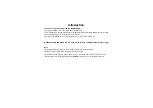
an EAPOL-Logoff message to the switch on behalf of the downstream PC, which triggers the LAN switch to
clear the authentication entry for the downstream PC.
Cisco Unified IP Phones also contain an 802.1X supplicant. This supplicant allows network administrators
to control the connectivity of IP phones to the LAN switch ports. The current release of the phone 802.1X
supplicant uses the EAP-FAST, EAP-TLS, and EAP-MD5 options for network authentication.
Required Network Components
Support for 802.1X authentication on Cisco Unified IP Phones requires several components, including:
•
Cisco Unified IP Phone: The phone acts as the 802.1X
supplicant
, which initiates the request to access
the network.
•
Cisco Secure Access Control Server (ACS) (or other third-party authentication server): The authentication
server and the phone must both be configured with a shared secret that authenticates the phone.
•
Cisco Catalyst Switch (or other third-party switch): The switch must support 802.1X, so it can act as
the
authenticator
and pass the messages between the phone and the authentication server. After the
exchange completes, the switch grants or denies the phone access to the network.
Best Practices-Requirements and Recommendations
•
Enable 802.1X Authentication: If you want to use the 802.1X standard to authenticate Cisco Unified IP
Phones, be sure that you have properly configured the other components before enabling it on the phone.
•
Configure PC Port: The 802.1X standard does not take into account the use of VLANs and thus
recommends that only a single device should be authenticated to a specific switch port. However, some
switches (including Cisco Catalyst switches) support multi-domain authentication. The switch
configuration determines whether you can connect a PC to the phone
’
s PC port.
◦
Enabled: If you are using a switch that supports multi-domain authentication, you can enable the
PC port and connect a PC to it. In this case, Cisco Unified IP Phones support proxy EAPOL-Logoff
to monitor the authentication exchanges between the switch and the attached PC. For more
information about IEEE 802.1X support on the Cisco Catalyst switches, refer to the Cisco Catalyst
switch configuration guides at:
http://www.cisco.com/en/US/products/hw/switches/ps708/tsd_products_support_series_home.html
◦
Disabled: If the switch does not support multiple 802.1X-compliant devices on the same port, you
should disable the PC Port when 802.1X authentication is enabled. If you do not disable this port
and subsequently attempt to attach a PC to it, the switch will deny network access to both the phone
and the PC.
◦
Configure Voice VLAN: Because the 802.1X standard does not account for VLANs, you
should configure this setting based on the switch support.
◦
Enabled: If you are using a switch that supports multi-domain authentication, you can continue to
use the voice VLAN.
◦
Disabled: If the switch does not support multi-domain authentication, disable the Voice VLAN
and consider assigning the port to the native VLAN.
Cisco Unified SIP Phone 3905 Administration Guide for Cisco Unified Communications Manager 8.6 (SIP)
14
Cisco Unified IP Phone
802.1X authentication
















































